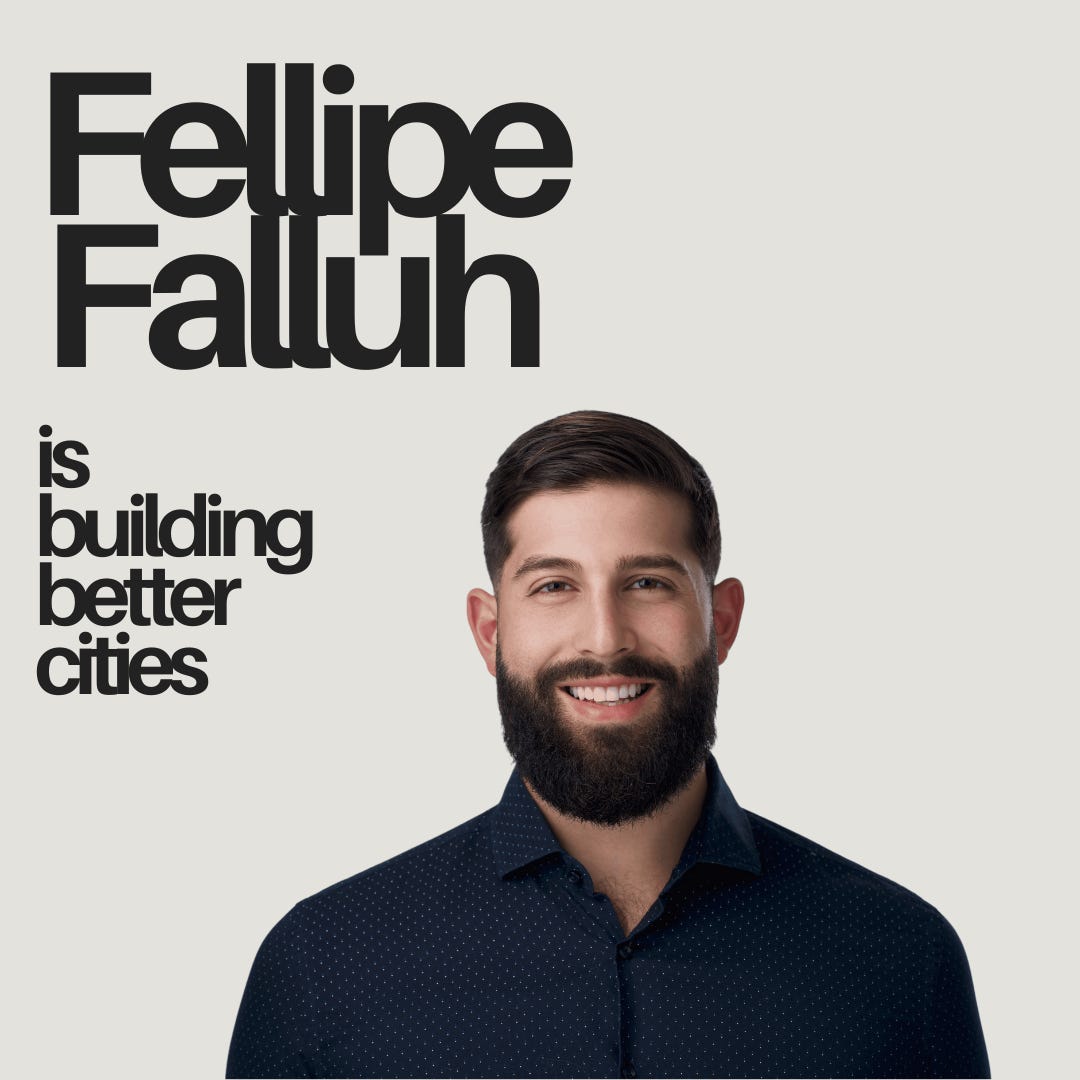Fellipe Falluh is Rebuilding Our Cities
Meet the young founder bringing residential retrofits to Quebec
Welcome back to Building Better, a newsletter about Canadian business leaders tackling hard problems with positive impact.
This week, I’m very excited to share the work of Fellipe Falluh with you.
Fellipe is the founder of RetroFit Construction, a Montréal-based company on a mission to decarbonize the built environment through residential retrofits. Fellipe holds a degree in Civil Engineering from McGill University and serves on the board of Bâtiment Passif Québec, a non-profit dedicated to promoting the Passive House construction standard across Quebec. He also hosts a French-language podcast about sustainable construction, Au-Delà des Murs.
Meet Fellipe Falluh
When most people think about solutions to climate change, they think of electric vehicles, solar panels, or maybe carbon-sucking machines.
Fellipe Falluh thinks about houses.
Falluh is the founder of RetroFit Construction, a Montréal-based company on a mission to decarbonize the built environment by retrofitting homes.
By replacing windows, doors, and building envelopes, and in some cases redesigning whole buildings, Falluh’s retrofitting process helps homeowners reduce their energy consumption while also modernizing their homes for the climate-change era.
When Falluh founded RetroFit Construction, he was just 24 and already butting heads with the limitations of an industry he’d long dreamed of building a career in. Born into a family of builders in Brazil, Falluh grew up immersed in the world of architecture and construction. When he learned about global warming in school, he realized that he might be able to help solve the problem by making his family’s industry more sustainable.
“At a very young age, I knew that’s what I wanted to do,” said Falluh of his work in sustainable construction.
He followed his dream to a civil engineering degree at McGill University and then landed a job with a contractor working on a LEED-certified building. But that first experience left him disappointed with existing environmental standards.
“[The LEED certification requirements] were just basically standard practices that should have been followed anyway,” said Falluh.
Falluh left the job and decided to refocus on a research project he’d begun during his undergraduate studies. He was studying retrofitting, a type of renovation where old buildings are re-equipped with better materials and technology to improve their energy efficiency. Though Falluh had initially been interested in new buildings, a course on sustainable construction opened his eyes to the potential of retrofits to significantly impact the environment.
Decades of research into new building regulations and materials have made it significantly easier to build energy-efficient buildings today. But as Falluh points out, new buildings comprise only 1% to 2% of total housing stock each year. By contrast, the carbon emissions generated from heating, cooling, and operating existing buildings make up 13% of Canada’s annual carbon footprint. The real challenge now lies in reducing the emissions of existing buildings.
“We have the technology and the knowledge to build new low-emission buildings,” said Falluh. “The real problem is in the built environment.”
The Turning Point
In 2021, Falluh decided to rise to the challenge and founded RetroFit Construction to specialize in helping residential buildings reach net-zero. His first customer was himself.
He purchased his first home, a duplex in Montreal, in 2022 and began the process of renovating it to meet net-zero-ready certification standards. The changes involved a full revamp of windows, insulation, ventilation, and many other structural components. In the end, it was worth it—Falluh’s home is now the first net-zero-ready home in Quebec.
Since then, RetroFit Construction has focused mostly on demonstration projects for single and small multi-unit buildings. Retrofits are still costly endeavors, so the market is in its early stages.
“With these projects, we are trying to influence the market… Every project so far has been record-breaking in Quebec.”
Eventually, Falluh hopes to work on larger buildings with more units.
“To have a bigger impact, we want to move to the multi-unit sphere,” he told me.
The scope of his work may change, too. Currently, RetroFit offers its clients contracting, consulting, and envelope-sealing services. In the future, Falluh sees the company moving into a developer role, designing and producing net-zero residential units.
For now, however, he’s focused on laying the foundations of an early retrofit market and spreading his knowledge across the Quebec ecosystem on his podcast, Au-Delà des Murs (Beyond the Walls).
“Five or ten years ago, energy efficiency might have seemed like a tree-hugger job—where you would do it for the environment but not get paid a lot. But energy efficiency is a whole new field,” said Falluh.
“It’s not a dream anymore. You can save the planet and make a good living out of it.”
Building Better is a monthly newsletter written by me, Sara Chiarotto O’Brien. By day, I’m a management consultant. By night, I write Building Better. You can learn more about why I started this newsletter here.
If you liked what you read today, consider subscribing below or share with a friend. And if you know someone who you think should be featured here, reply to this email, or send me a message.







[English follows] Je pense qu'il s'agit là d'une inspirante preuve de concept et elle est appuyée par une réalisation aussi tangible que briques et mortier. Voilà une solution qui s'attaque à un problème réel et concret, l'efficacité énergétique. Hâte de voir évoluer RetroFit Construction au fil des projets.
I think this is an inspiring proof of concept, and it's backed by an implementation as tangible as bricks & mortar. This is a solution that addresses a real, concrete problem: energy efficiency in housing. I look forward to see RetroFit Construction evolve throughout it's futur projects.